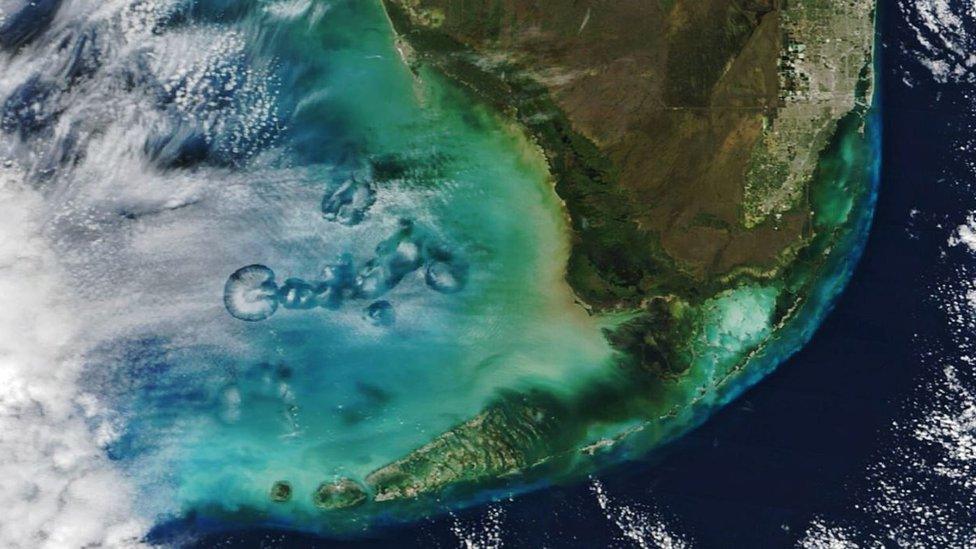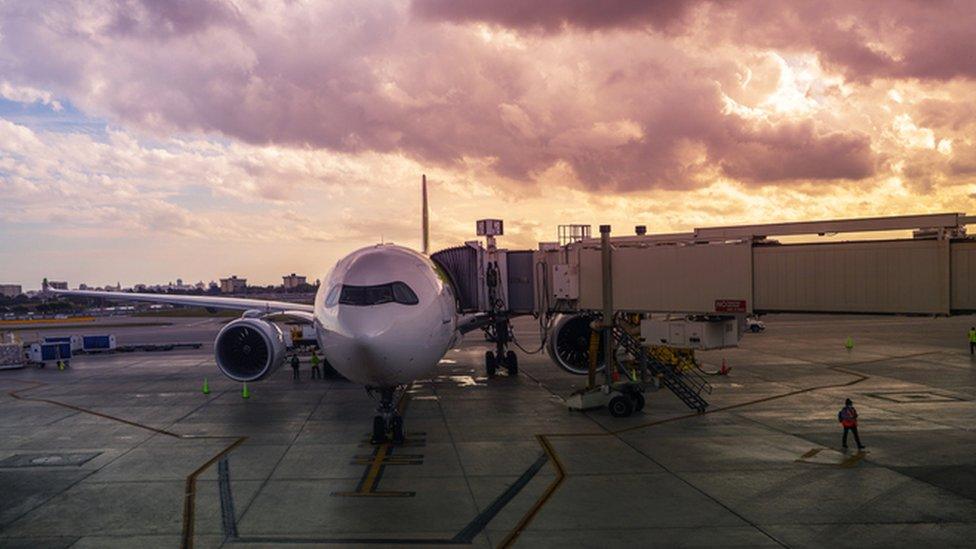Fallstreak holes: Nasa spots rare 'UFO' cavum clouds from space
- Published
- comments

Nasa's Terra satellite spotted the clouds off the coast of Florida in America
Nasa space cameras have snapped a photograph of a rare strange-looking cloud that looks a bit like a group of flying saucers.
The image shows a cluster of cavum clouds and it was spotted by their Terra satellite above the Gulf of Mexico, off the coast of the US state of Florida.
According to the US space agency, the clouds look so odd that people used to think that they were signatures of flying saucers or other UFOs.
After a 70 year mystery, experts finally realised that rather than any alien origins, the clouds were caused by airplanes.
What did Nasa find?

Nasa says the unusual clouds were caused by planes taking off from nearby Miami Airport
The image was taken in January by Nasa's Terra satellite, which was launched 25 years ago to observe Earth's atmosphere, oceans and land as well as provide important data about natural hazards such as fires and volcanoes.
When the eye-catching cavum clouds were first observed in the 1940s, scientists did not know how they were formed, causing much speculation including theories that they were made by UFOs (unidentified flying objects.)
However, experts now know they are caused by planes moving through altocumulus clouds.
Seen from below, the clouds can look like a large circle has been cut neatly from the clouds, with feathery wisps left in the middle of the hole.
In this case, Nasa say the holes were caused by planes taking off from nearby Miami International airport.
What are cavum clouds?

This cavum cloud was pictured in Nottingham in 2022
Cavum clouds are also known as fallstreak holes or holepunch clouds.
The unusual formation appears as a large circular gap in a blanket of clouds - it's sometimes said to resemble a giant floating jellyfish in the sky.
Cavum clouds form when you have supercooled water droplets that are starting to turn to ice.
These cooled water droplets are still made of water around the outside, whereas in the middle they are already starting to turn to ice.
As they turn to ice and the water droplets evaporate it causes a hole to form in the cloud.
